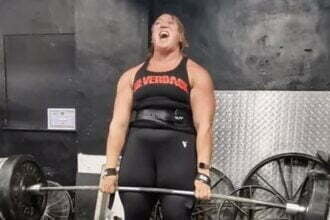A story of how our work helps journalists who use data.
Our mission at Our World in Data (OWID) is to make data and research on the worldâs biggest problems â and their solutions â easier to access and understand.1
Millions of people see our work directly each year by visiting our site, receiving our newsletters, and following us on social media.
But we also design our work to have an indirect impact, from others sharing and building on it. Thatâs why we use a permissive Creative Commons license and include easy options to share and download our charts and data.2
One important indirect impact is via the many journalists around the world who rely on us for their work, including those at top outlets such as The New York Times, The Washington Post, The Economist, and more.
To understand how this key group uses our work and how we could improve it for them, we recently spoke with Sondre Solstad, The Economistâs Senior data journalist.
We learned a lot from speaking with Sondre: how he uses our work, what features he finds most helpful, and some ways we could improve.
In this article, we share one particular part of Sondreâs story because it exemplifies how we think about our impact. Making important data easier to access is more than just saving people a few clicks. It can help how journalists use and write about data.
We hope you find Sondreâs story interesting, and perhaps it sparks some ideas for how OWID could be useful for you.
We share Sondreâs story and summarize what he told us with his permission and approval of this published version.
Like all journalists, Sondre Solstad is always on the lookout for interesting new perspectives.
He had written a couple of articles for The Economist on the climate impacts of food, âin most cases using data from OWIDâ.3 Writing a follow-up piece at some point was in the back of his mind.
One day while browsing the web, Sondre came across a couple of our charts showing data he hadnât seen before â the carbon footprint of different foods, given by calorie count and by protein content.
This turned out to be what Sondre needed: seeing those charts gave him a new angle on the climate impacts of food and sparked the initial idea for an article.
Sondreâs next step was to get a handle on the data. He visited OWID and dug into our Environmental Impacts of Food Data Explorer, a tool showing a wide range of data on the carbon footprints, land use, and water footprints of many food products.
Favorite feature: data explorers
âI use the data explorers extensively⦠I really like them.â
Sondre told us how our data explorers give him the ability to quickly get an overview of what data is available, read detailed information about it, download it easily, and share the visualizations â all of which make his job easier.
We currently have 45 data explorers on topics ranging from CO2 emissions and population to inequality and global health.
See all of our data explorers â
After spending some time to get a good overview of the data, Sondre downloaded it so that he could do the specific analysis he had in mind, and that served as the foundation for his article.4
The end product was Sondreâs article for The Economist, âA different way to measure the climate impact of foodâ, which compared the carbon footprint of different foods by weight, calories, and protein content â all indexed to the banana.
The visualization here is from the article; see the article for an interactive version.
Sondre told us that OWID was an important resource for his article in two ways:
Because the data was so easy to find, and because there was so little friction between the data and me getting it â and also because you had made me aware of the data in the first place, that this data existed â it was instrumental in making the story become a story.
It saved me a lot of time. And I think it saved me time to the extent that I probably wouldnât have written this article if I didnât have the data readily available.
Seeing our chart made Sondre aware that the data existed and sparked the initial idea for his article. And because he could access reliable data quickly, he was able to spend more time analyzing it and crafting the writing and visualizations.
Sondreâs article was covered extensively across The Economistâs channels (online, print, newsletters, and its The Intelligence podcast), reaching its audience of millions of readers and listeners. It also won the 2024 Royal Statistical Society Excellence in Journalism Award for Best Data Visualization.
Sondreâs experience is one example among many of how journalists use our work. Itâs not just about saving a few clicks â making the data easier to access and use helped make Sondreâs article a reality.
This is key to how we think about our impact: giving others â journalists, teachers, policymakers, researchers, and many others â what they need to do good work.
We hope you enjoyed reading this and maybe picked up some ideas on how OWID could be useful for you, too.
Are you a journalist who uses OWID for your work? Weâd love to hear from you.
We know that many great journalists use OWID, and weâd like to better understand the different ways that they use our work.
So if youâre a journalist and would like to speak more with us, please email us at [email protected]. Thanks â we look forward to hearing from you!
Reuse this work freely
All visualizations, data, and code produced by Our World in Data are completely open access under the Creative Commons BY license. You have the permission to use, distribute, and reproduce these in any medium, provided the source and authors are credited.
The data produced by third parties and made available by Our World in Data is subject to the license terms from the original third-party authors. We will always indicate the original source of the data in our documentation, so you should always check the license of any such third-party data before use and redistribution.
All of our charts can be embedded in any site.
#data #journalist #Economist #Sondre #Solstad #World #Data





